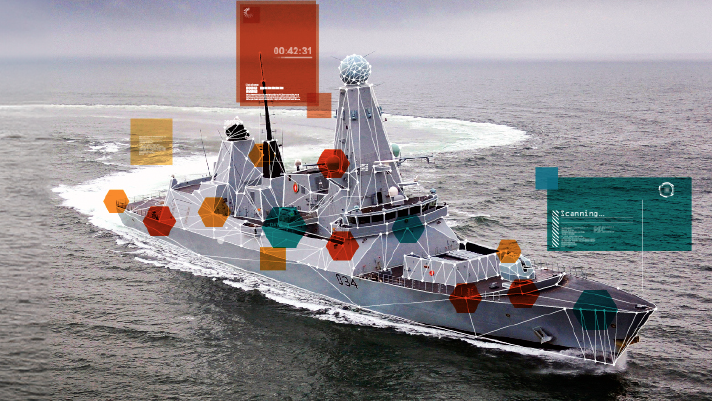
In an increasingly dynamic and unpredictable world, the need for mission readiness in defence is paramount. The blurring of lines between physical and digital threats has created a broader attack surface than ever before, meaning that a lot of the danger now lurks in the grey zone and cyber space. And as geopolitical tensions mount, traditional, physical examples of conflict are not decreasing either.
Assets, such as warships and fighter jets, help to facilitate ’mission readiness’. But managing the long list of assets is a difficult job. Similar to all sectors, decisions need to be as cost effective as possible and demonstrate a positive return on investment for each procurement, maintenance or upgrade activity. The fact that they are large, complex and spread across multiple locations only adds an extra layer of intricacy. Data plays a significant role in ensuring readiness across all areas of defence: over three-quarters (76%) of defence decision makers across industry have identified a direct link between the two. This includes how important defence assets are managed. Yet, with much of this data currently disconnected and held in disparate locations, all domains must focus on connecting it in order to be mission ready.
That’s why a single source of data truth is needed to enable decisions around key asset investments, ongoing maintenance, monitoring, augmentation and effective deployment to be made with confidence and efficiency.
Disconnected data silos
Secure and timely access to quality data is key to keeping defence assets in a state of operational readiness and, ultimately, to strengthening the nation’s defences.
Technology capable of generating and producing data around each individual asset already exists. The ability to derive insight to help inform decisions around asset maintenance, readiness, performance and value is also a real possibility.
However, the issue is then creating a digital thread between this information, to ensure it is reliable and can be seamlessly and securely shared with those who require real-time visibility.
A lot of the time, data necessary for making strategic decisions around assets is held across a web of internal and third-party systems and applications. This creates a complex, often duplicated – or even contradictory – matrix of data coming from disparate silos.
For users, working from disconnected data makes it difficult to access a dependable and consistent source of truth. In other words, a single representation of an asset’s status, relative to the wider infrastructure and real-time capability.
This disconnect frequently results in decisions that can hinder the goal of mission readiness, or at least cost effectiveness. For instance, focusing on repairing or maintaining assets that shouldn’t have been a priority, can lead to avoidable downtime. It can also be as expensive as failing to recognise assets that require urgent maintenance or enhancement.
Unlocking 360° vision through Integrated Product Support
To overcome the issue and achieve the fundamental objective of data-driven mission readiness, there now needs to be a move towards aggregation and the breaking down of these data silos.
Effective Integrated Product Support can help to securely connect a web of systems. This provides decision makers with a well-rounded view across their entire infrastructure, allowing them to ensure assets remain at peak performance for longer. Integrated Product Support solutions can be fused together into organisations’ current environments, which means investing in a number of new systems is not required, helping to maintain operational tempo.
Importantly, with Integrated Product Support, modular enhancements of each asset are still enabled, albeit as part of a bigger picture encompassing capacity, capability, prioritisation and return on investment.
This gives decision makers in the support teams and on the frontline the power of perspective, giving them 360° insights necessary for accurate real-time decisions, and enabling greater focus on broader strategy and prioritisation.
Article submitted by: Luigi Sidoli, Head of Campaigns and Programmes – Digital Asset Management at BAE Systems Digital Intelligence








